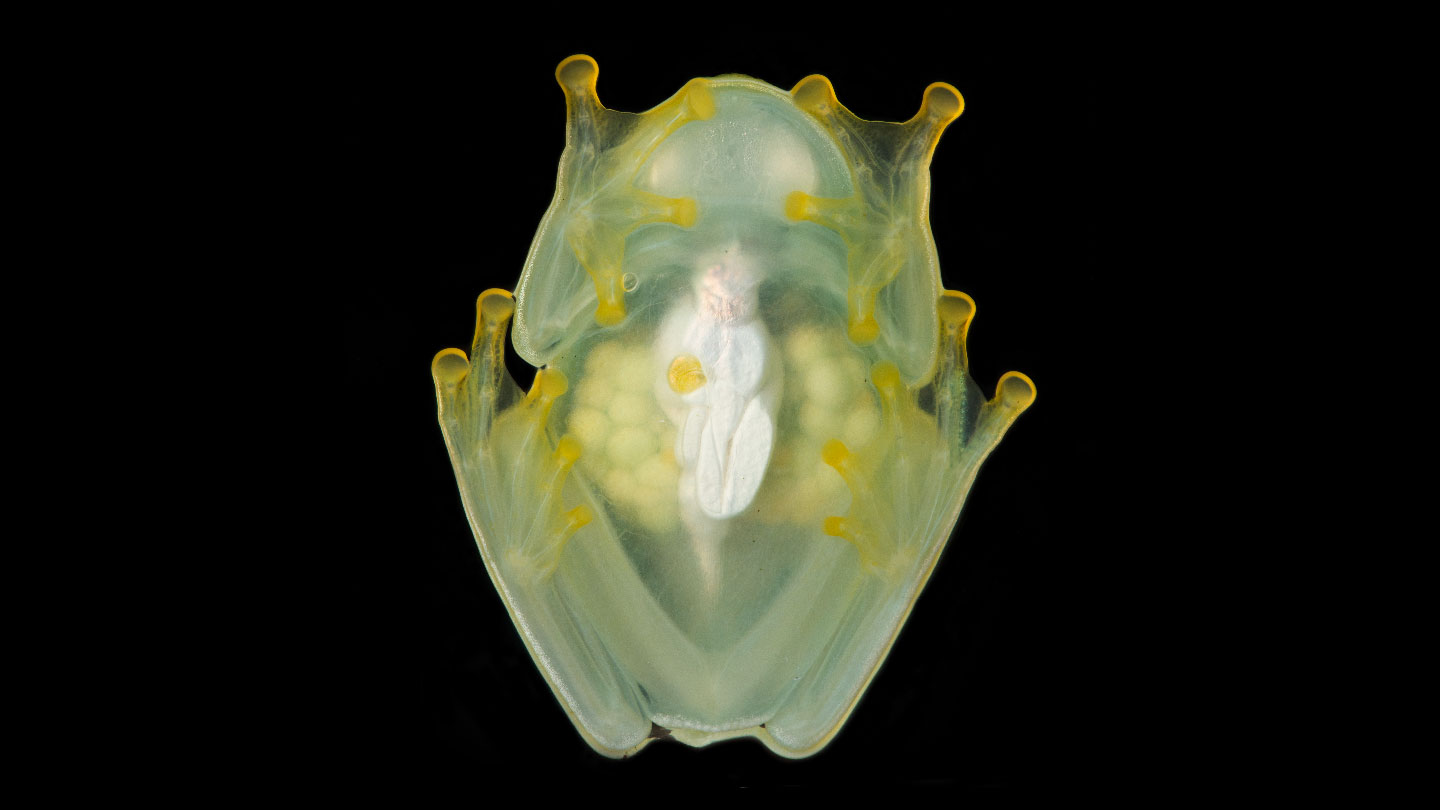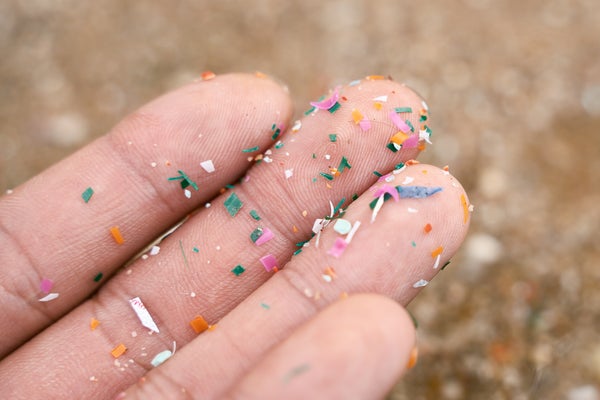As tiny glass frogs fall asleep for the day, they take almost 90 percent of their red blood cells out of circulation.
The colorful cells cram into hideaway pockets inside the frog liver, which disguises the cells behind a mirrorlike surface, a new study finds. Biologists have known that glass frogs have translucent skin, but temporarily hiding bold red blood brings a new twist to vertebrate camouflage (SN: 6/23/17).
“The heart stopped pumping red, which is the normal color of blood, and only pumped a bluish liquid,” says evolutionary biochemist Carlos Taboada of Duke University, one of the discoverers of the hidden blood.
Science News headlines, in your inbox
Headlines and summaries of the latest Science News articles, delivered to your email inbox every Friday.
Thank you for signing up!
There was a problem signing you up.
What may be even more amazing to humans — prone to circulatory sludge and clogs — is that the frogs hold almost all their red blood cells packed together for hours with no blood clots, says co-discoverer Jesse Delia, now at the American Museum of Natural History in New York City. Wake the frog up, and cells just unpack themselves and get circulating again.
Hiding those red blood cells can double or triple the transparency of glass frogs, Taboada, Delia and colleagues report in the Dec. 23 Science. That greenish transparency can matter a lot for the snack-sized frogs, which spend the day hiding like little shadows on the undersides of the leaves high in the forest canopy.
What got Delia wondering about transparency was a photo emergency. He had studied glass frog behavior, but had never even seen them asleep. “They go to bed, I go to bed — that was my life for years,” he says. When he needed some charismatic portraits, however, he put some frogs in lab dishes and at last saw how the animals sleep the day away.
“It was really obvious that I couldn’t see any red blood in the circulatory system,” Delia says. “I shot a video of it — it was crazy.”
As he pitched his project to a Duke University lab for support, he was stunned to discover that another young researcher was pitching the same lab to study transparency in glass frogs. “I was like, oh, man,” Delia says. But the leader of the biological optics lab at Duke, Sönke Johnsen, told Delia and his rival, Taboada, that they had different skill sets and should tackle the problem together. “I think we were hardheaded at first,” Delia says. “Now I consider him as close as family.”
From astronomy to zoology
Subscribe to Science News to satisfy your omnivorous appetite for universal knowledge.
To show what red blood cells do in living frogs made a tough puzzle. Light microscopy wouldn’t work for seeing through the mirrorlike outer tissue of the liver. Nor would anything that woke up the frogs (Hyalinobatrachium fleischmanni), because the red blood cells would rush out through the body. Even anesthetizing the frogs kept the liver trick from working.
The answer Delia and Taboada found comes from a technique called photoacoustic imaging, mostly used by engineers. It reveals hidden interiors thanks to the subtle vibrations created by light striking various molecules and causing slight energy releases. Duke’s Junjie Yao joined team glass frog to tailor the technique to frog livers, taking special care not to wake the animals in the process.
Despite glass frogs’ name, transparency among vertebrates can get much more extreme, says fish biologist Sarah Friedman of the National Oceanic and Atmospheric Administration’s Alaska Fisheries Science Center in Seattle. She tweeted an image in June of a newly caught blotched snailfish (Crystallichthys cyclospilus), clear enough in most of its body to show flesh tones and finger lines in her hand as she cradled it. And that’s not even the best example. The larval stages of tarpon fish and eels, glassfishes and a kind of Asian glass catfish “are almost perfectly transparent,” says Friedman, who wasn’t involved in the new study.
But these marvels have the advantage of living in water, she says. Evolving exquisite glassiness is easier where there’s not as sharp a visible difference between animals’ bodies and their watery homes. Still, having a transparent body is pretty cool, on land or sea.














